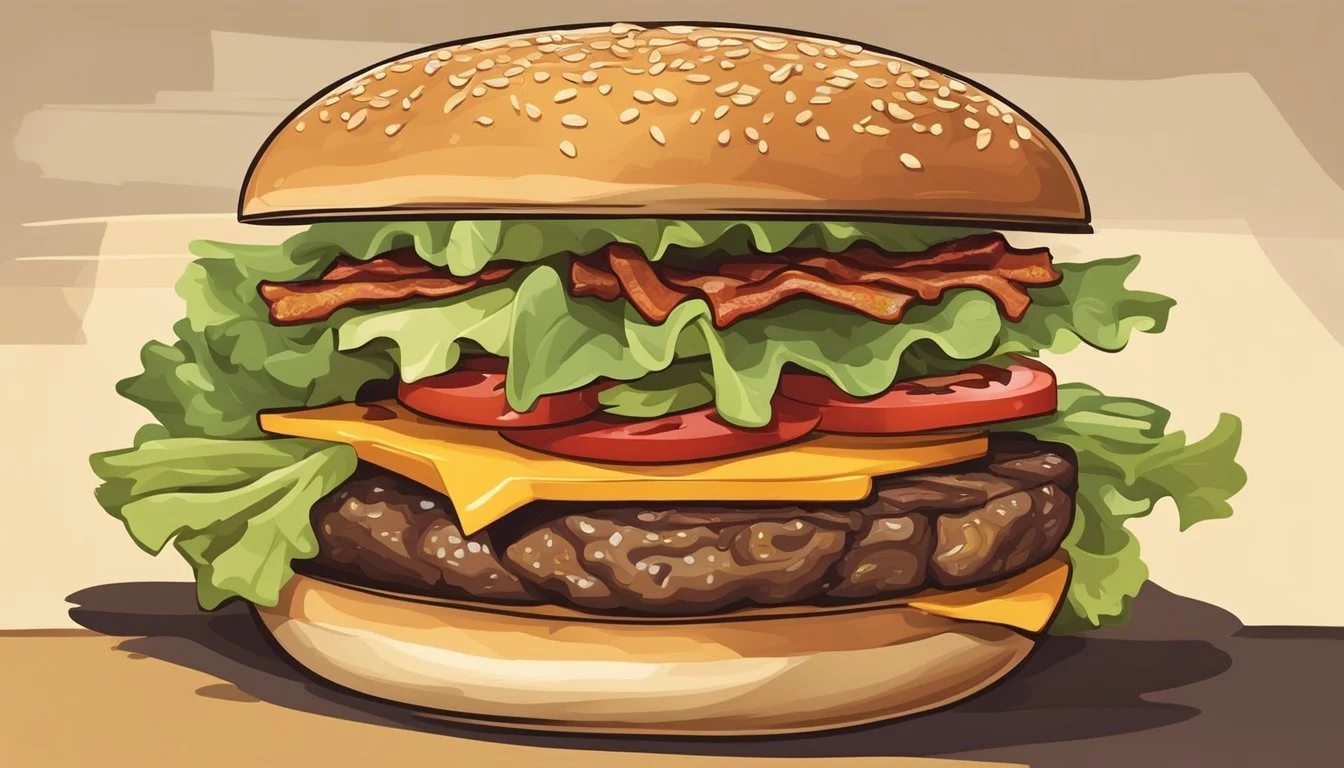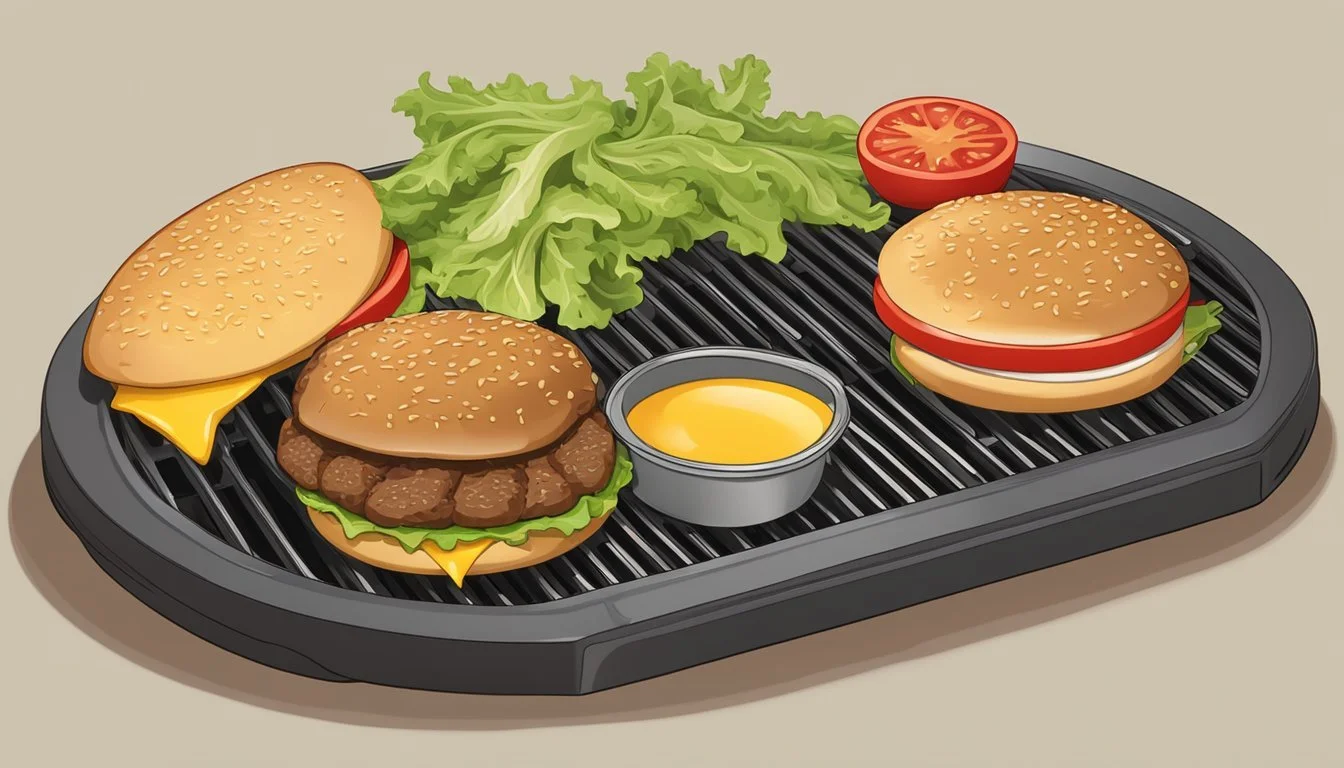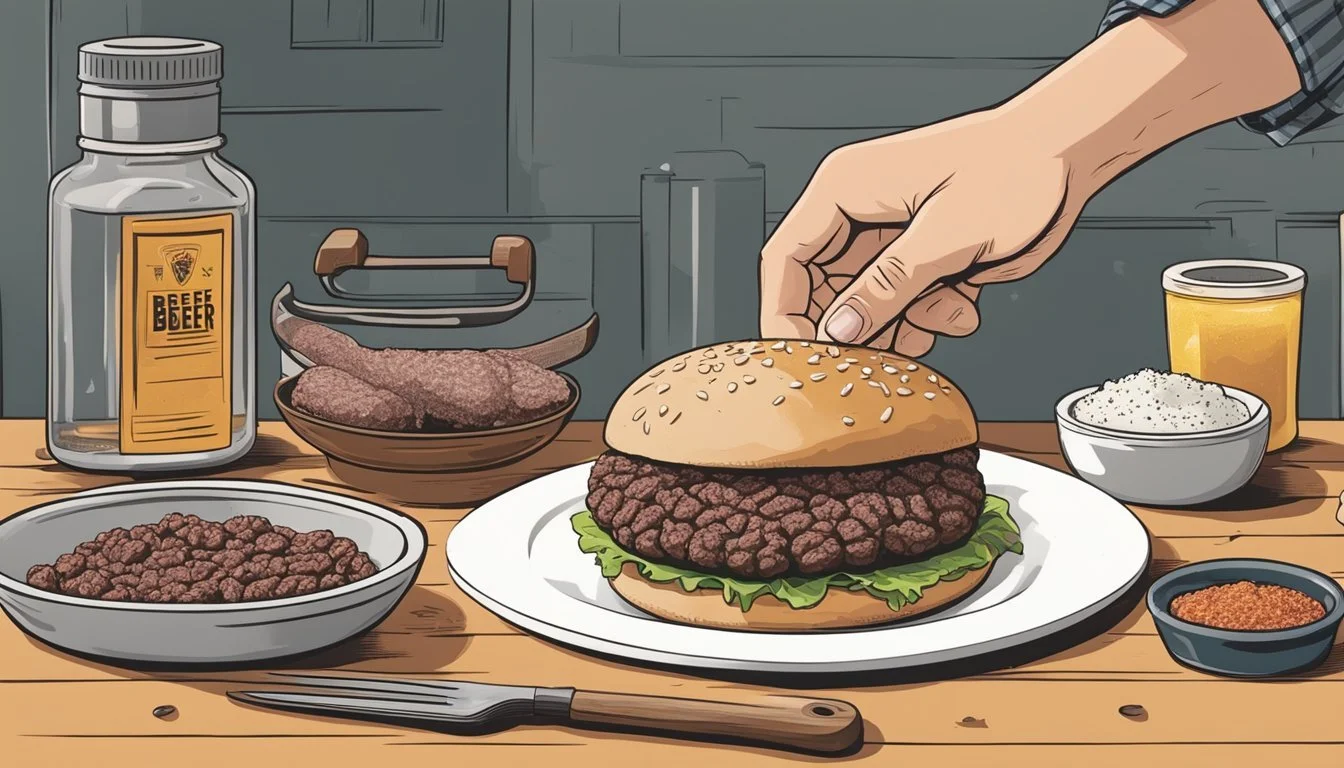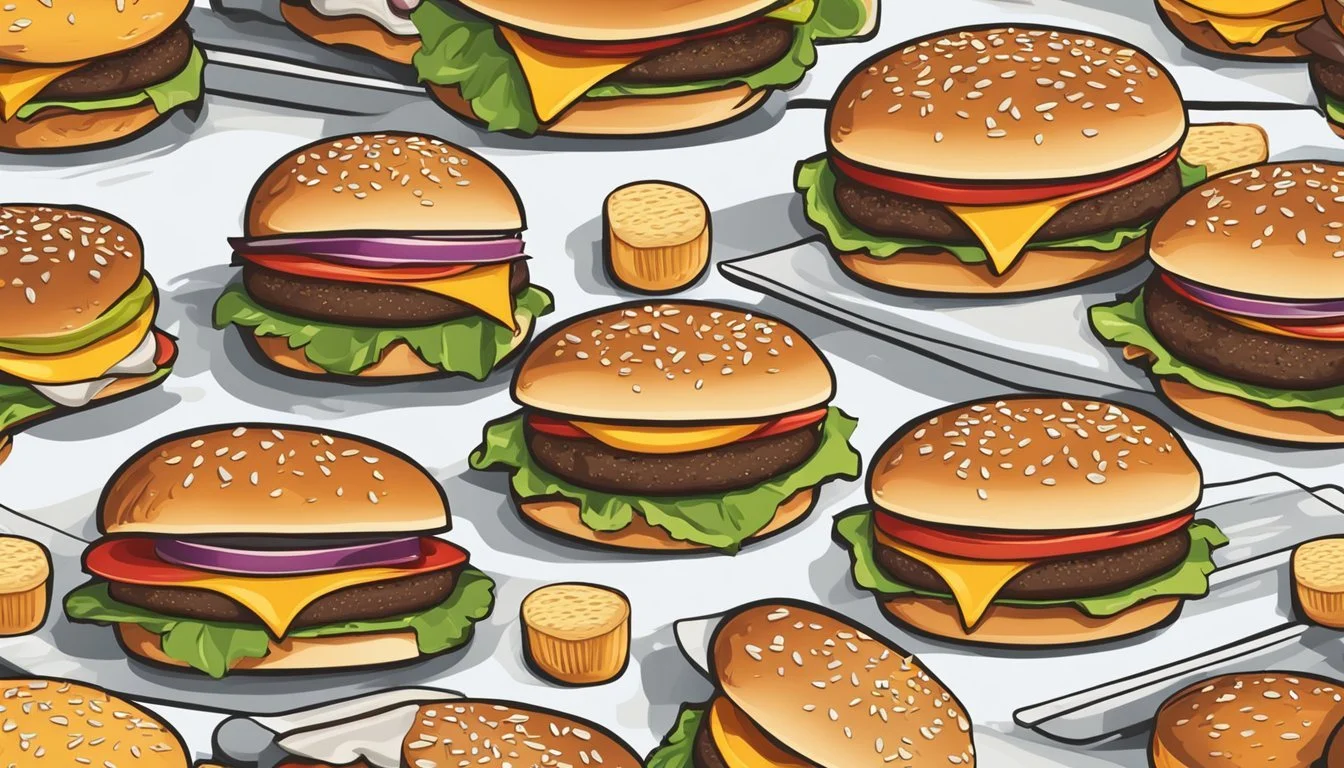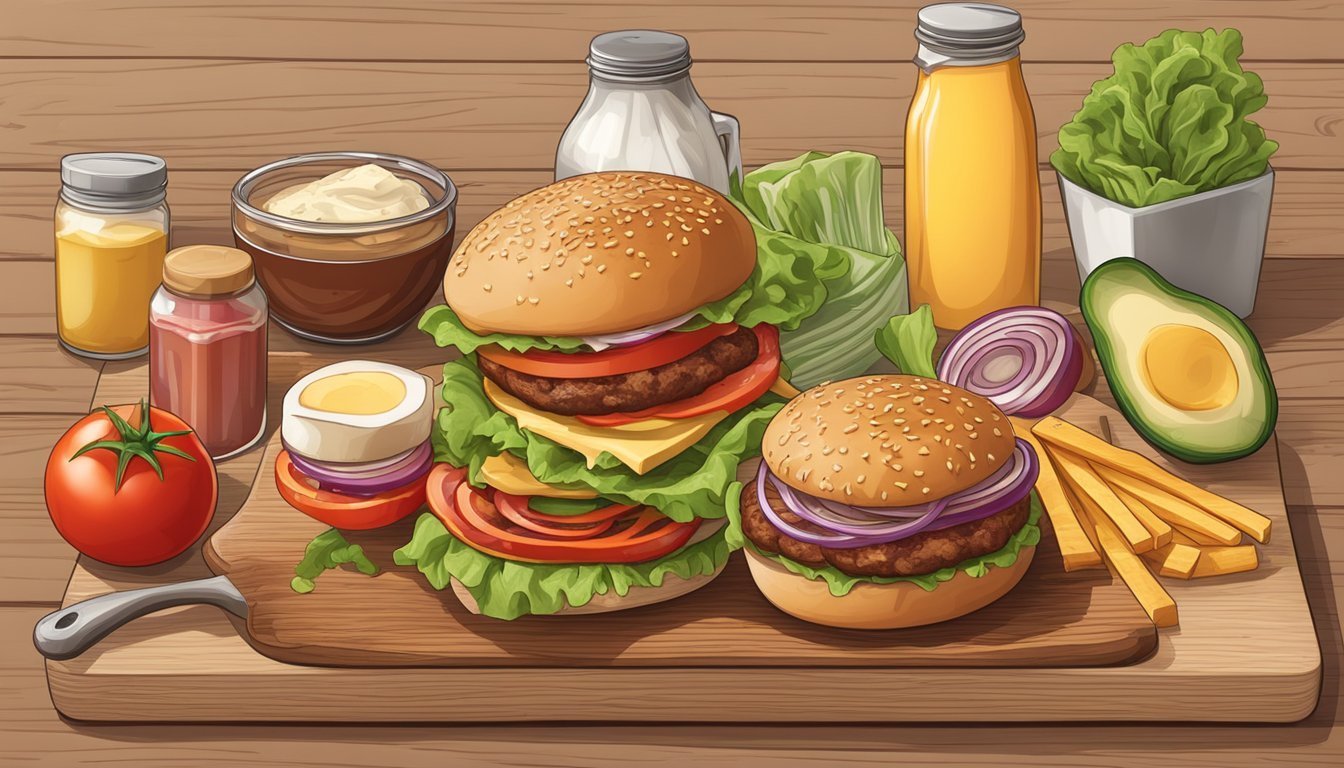How to Assemble the Perfect Texas Burger
Your Ultimate Guide
The quintessential Texas burger is a hallmark of grilling season, embodying the bold flavors and hearty spirit of the Lone Star State. Crafting the perfect Texas burger isn't just a matter of following a recipe; it's an art that blends high-quality beef (how long does beef last?), apt seasoning, and precise layering of vibrant toppings to create a symphony of taste and texture. Whether seared over the flame of a backyard barbecue or carefully cooked on a grill pan in the kitchen, the centerpiece of a Texas burger is a well-seasoned beef patty that's juicy and flavorful.
Beyond the beef, the assembly of a Texas burger elevates it from merely good to exceptional. The construction begins with a sturdy bun capable of supporting generous lashings of condiments and robust toppings like crispy bacon (how long does bacon last?), spicy salsa, and creamy guacamole. Paying attention to the order of ingredients ensures balance in every bite and prevents the burger from becoming soggy. Fresh, crisp lettuce, juicy tomato slices, and sharp onions round off the experience, adding a satisfying crunch and freshness that contrasts the richness of the meat.
Each component of a Texas burger is carefully chosen to stand up to the boldness of its counterparts, creating a burger that is as large in flavor as the state itself. It promises a dining experience that satisfies the heartiest of appetites, ensuring the Texas burger remains a cherished centerpiece during the grilling season and beyond.
Choosing the Right Ingredients
The foundation of a perfect Texas burger lies in the careful selection of its components. Each ingredient, from the beef to the produce, contributes to the burger's overall flavor and satisfaction. Listed below are the essential elements that one should consider.
Selecting the Best Beef
For a classic Texas burger, 80/20 ground beef—which refers to 80% lean meat to 20% fat—is the preferred choice because it provides the ideal balance of flavor and juiciness. When forming burger patties, handle the meat delicately to ensure a tender bite.
Bread and Buns Selection
The buns are the frame of the burger and should be as fresh as possible. Hamburger buns should be soft yet sturdy enough to hold up to the juiciness of the beef and the weight of the toppings. Toasting the buns can add a nice texture and flavor.
Cheese Varieties
Cheddar cheese is a staple for the Texas burger, noted for its sharpness and excellent melting qualities. Variations like sharp cheddar cheese can provide an additional depth of flavor, complementing the richness of the meat.
Fresh Produce for Toppings
Crisp produce such as iceberg lettuce, onion, and tomato add not only a refreshing crunch but also a balance to the savoriness of the beef and cheese. Pickles and other veggies can introduce acidity and additional layers of taste to the burger.
Preparing the Patties
When crafting the perfect Texas burger, the patty plays a pivotal role as the centerpiece. It's essential to select quality beef and handle it carefully throughout the seasoning and forming process to ensure a flavorful and well-structured burger.
Seasoning the Meat
A top-tier Texas burger begins with perfectly seasoned meat. Opt for ground chuck with a fat content around 20% for a juicy, flavorful patty. Keep the seasoning uncomplicated; a generous sprinkle of salt and freshly ground black pepper should suffice. It's crucial to mix the seasoning gently into the meat to ensure even distribution without overworking it, as this can lead to a tough patty.
Meat Selection: Ground chuck, 80/20 fat ratio
Seasonings: Salt, black pepper (freshly ground)
Mixing: Light and gentle to avoid tough texture
Forming the Perfect Patty
Once seasoned, divide the meat into equal portions, typically around 5 ounces each for a substantial burger. Shape each portion into a round, even patty that's slightly larger than the bun. This accounts for shrinkage during cooking. The patties should be just firm enough to hold together but not compressed too tightly.
Portion Size: 5 ounces
Patty Size: Larger than the bun diameter
Texture: Firm yet tender
Indentation Technique
Before cooking, press a small indentation in the center of each patty. This prevents puffing up during the cooking process and ensures an even thickness across the burger. The indentation should be about a thumbprint's depth. This technique is key to achieving a flat, evenly cooked patty that fits the bun perfectly.
Technique: Press thumbprint's depth in center
Purpose: Prevent puffing, ensure even cooking
Grilling the Burgers
Grilling the perfect burger is both an art and a science, involving proper grill setup and attention to cooking times for desired doneness. Now, let's focus on the two core aspects of grilling burgers that are pivotal to achieving the ideal Texas burger.
Grill Setup and Safety
Before cooking, it is crucial to prepare the grill correctly. If using a charcoal grill, light the coals using a chimney starter and wait for them to ash over, typically taking 15 to 20 minutes. For a gas grill, preheat to medium-high heat (around 450 to 500 degrees Fahrenheit) by opening the lid, turning on the gas, and igniting the grill. Ensure that the grill is stable and located away from any flammable materials.
Safety Checklist:
Keep a fire extinguisher or baking soda nearby to deal with potential flare-ups.
Use long-handled tools to avoid burns.
Always have the lid open when lighting a gas grill.
Achieving the Desired Doneness
The cooking time for burgers highly depends on their thickness and your desired level of doneness. Burgers should be cooked over medium-high heat, which seals in juices and creates a desirable char.
Doneness Guide:
Doneness Internal Temperature Rare 120-125°F Medium Rare 130-135°F Medium 140-145°F Medium Well 150-155°F Well Done 160-165°F and above
A digital meat thermometer is a reliable tool for assessing doneness. For a standard beef patty that's about an inch thick, cooking for 3-4 minutes on each side typically achieves medium-rare doneness. To ensure an evenly grilled burger, only flip the meat once, allowing it to cook properly on each side and avoid pressing down on the burgers, as this causes juices to escape and might result in a drier burger.
Assembling the Burger
Crafting the perfect Texas burger requires attention to detail, from a sturdy bun to carefully layered toppings and the right choice of condiments. Let’s dive into the construction of a Texas burger that balances texture and flavor.
Layering the Toppings
For an authentic Texas experience, one should begin with a sturdy bun, such as a brioche, to provide a solid foundation. The burger should be placed directly on the bottom half of the bun. Next, two slices of crispy bacon add a smoky crunch, essential for the Texan flair.
Toppings need to be arranged thoughtfully to distribute flavors and textures throughout:
Cheese: Should be melted onto the burger itself.
Tomato: A slice atop the cheese prevents it from slipping.
Lettuce and onion: Should be fresh, adding crunch and sharpness, placed on top of the tomato.
Applying Condiments and Sauces
Condiments and sauces add the vital moisture and zest. They should be applied with a balance to avoid overwhelming the other components:
Barbecue sauce: A Texas staple, should be rich, smoky, and applied sparingly on the underside of the top bun.
Aioli: An optional creamy and garlicky addition, which can be spread on the top or bottom bun.
The assembly culminates with the burger bun's top half, enveloping the burger in a perfect package ready to be enjoyed.
Finishing Touches
Upon crafting a juicy and flavorful Texas burger, the last step is to complement it with the right side dishes and ensure it's served at its best. Each chosen accompaniment should enhance the burger's taste and provide a complete dining experience.
Side Dishes and Pairings
For an authentic Texas-style meal, side dishes are as crucial as the burger itself. They should complement the bold flavors of a burger loaded with toppings like caramelized onions, crispy bacon, and sliced jalapeños.
Crispy fries: A classic partner, providing a satisfying crunch.
Coleslaw: Offers a tangy contrast with its vinegar or mayonnaise dressing.
Sweet potato fries: Adds a hint of sweetness to balance the savory burger.
Corn on the cob: Grilled to enhance its sweetness, dusted with seasoning.
Healthy Options:
Side salad: A light choice dressed with a vinaigrette.
Grilled vegetables: An array of veggies brushed with olive oil and seasoned.
Serving the Perfect Burger
The perfect burger is all about the details, from juicy patties with the right fat content to the choice of fresh condiments. Serve these burgers hot off the grill with a preparation time that aligns with the total time guests will be ready to eat.
Temperature: Keep burgers warm in a low-heat oven until ready to serve.
Presentation: Stack the hamburger components neatly for both visual appeal and ease of eating.
Condiments:
Avocado or guacamole: Apply liberally for creaminess.
Fresh or pickled jalapeños: Provide heat to suit the diner's preference.
Extras:
For lamb burgers, consider a yogurt-based sauce.
Offer a selection of cheeses for customized flavors.
Remember, a Texas burger becomes a memorable meal with the right finishing touches.
Additional Tips and Techniques
In constructing the quintessential Texas burger, one must pay attention to the meat’s quality, understand grilling nuances, and know how to properly store any leftovers. Each step is crucial to ensuring the final product embodies the classic Texas spirit.
Handling the Meat
When prepping burgers, selecting high-quality ground beef with a 20% fat content ensures a juicy patty, as the fat provides both flavor and moisture during cooking. It's critical to handle the meat as little as possible, thus avoiding dense, meatloaf-like patties. Season the beef just before cooking to prevent it from drying out or becoming tougher. Moreover, creating a small indentation in the center of the patty compels it to retain its shape and cook evenly.
Grilling Insights
Whether one opts for charcoal or gas, preheating the grill to a medium-high heat is a staple strategy for the perfect sear. Place the burgers on the grill and cook them for approximately 4 to 5 minutes per side; this should result in a robust exterior and a safe internal temperature of 160°F. Remember to resist pressing down on the burgers while they cook, which can squeeze out valuable juices and lead to a drier burger.
Storing Leftovers
For leftover burgers, they should be stored in an airtight container and placed in the refrigerator as soon as they’ve cooled down to room temperature. To maintain quality, leftovers should be consumed within two days. When reheating, bring them to the same internal temperature of 160°F to ensure they're heated thoroughly. As for the accompanying side dishes, they generally keep well in similar containers and under refrigeration.
Advanced Burger Crafting
In the realm of burger construction, it is the nuanced appreciation of flavor pairings and condiment craftsmanship that separates the novice from the connoisseur.
Innovative Topping Combinations
Bold flavors and textures have a significant impact on the eating experience. The perfect Texas burger might feature crispy bacon for its smoky crunch and sharp cheddar cheese for its tangy creaminess. One might consider adding a layer of caramelized onions to introduce a hint of sweetness, providing a flavorful contrast to the savory meat.
Bacon: Crispy strips lend a smoky crunch.
Sharp Cheddar: Provides tangy depth.
Topping Pairings Table
Topping Flavor Profile Texture Crispy Bacon Smoky Crunchy Sharp Cheddar Tangy, Creamy Smooth Caramelized Onions Sweet, Savory Soft
Creating Signature Burger Sauces
The sauce on a burger is the secret handshake of flavors that brings all elements together. For a Texas burger, a signature sauce might combine the traditional ketchup and mustard base with smoked paprika or chipotle powder to introduce a layer of complexity. Consider blending in a touch of honey for sweetness or apple cider vinegar for a slight tang.
Base: Ketchup and mustard.
Spices: Smoked paprika, chipotle powder.
Sweeteners: Honey for balance.
Acids: Apple cider vinegar for tanginess.
Unique Twists on Classic Burgers
A classic hamburger is a canvas for innovation. Infusing the patty with finely chopped jalapeños can provide a spicy kick that elevates the burger’s profile. For those seeking a gourmet experience, layering blue cheese crumbles beneath the sharp cheddar cheese can introduce a bold and sophisticated flavor that marries well with the richness of the meat.
Spicy Twist: Jalapeños finely chopped into the beef.
Cheese Layering: Blue cheese beneath sharp cheddar.
By applying these advanced crafting techniques, one can elevate a simple Texas burger to a culinary marvel, turning each bite into an exploration of curated flavors and textures.
Health and Dietary Considerations
Crafting the perfect Texas burger doesn't have to mean compromising on health or dietary needs. By considering alternative meat options, gluten-free or low-carb buns, and a vegetable-forward approach, individuals can enjoy a flavorful burger that aligns with their wellness goals and dietary restrictions.
Alternative Meat Options
For those looking to diversify their protein sources or reduce red meat consumption, alternative meats are a valuable option. Lean meats like ground turkey or chicken can be used to craft a burger with a lower fat content. For a richer flavor, ground lamb offers a unique taste while still providing a protein-rich burger.
Turkey: Lean and low-fat
Chicken: Slightly higher in fat than turkey, tender
Lamb: Rich in flavor, higher in fat
Gluten-Free and Low-Carb Bun Options
Given the rise in demand for gluten-free diets, there are now ample gluten-free bun alternatives that do not compromise on texture or taste. For those watching carb intake, lettuce wraps or portobello mushroom caps present a fresh, crisp vehicle for enjoying a grilled burger without the bread.
Lettuce Wraps: Fresh, crisp, and nearly carb-free
Portobello Caps: Meaty texture, low on carbs
Gluten-Free Buns: Various brands offer similar taste and texture to traditional buns
Vegetable-Forward Burgers
Vegetables don't have to be relegated to toppings alone; they can also be the star of the burger. Grilling veggies such as bell peppers, zucchinis, or eggplants (What wine goes well with eggplant?)and stacking them on a burger enhances both the nutrient profile and the flavor spectrum of the meal. For those seeking plant-based options, black bean patties or burgers made from quinoa and sweet potato are satisfying alternatives that deliver on both taste and nutrition.
Grilled Veggies: Bell peppers, zucchinis, eggplants
Black Bean Patties: High in protein and fiber
Quinoa and Sweet Potato Burgers: Nutrient-dense with complex flavors

